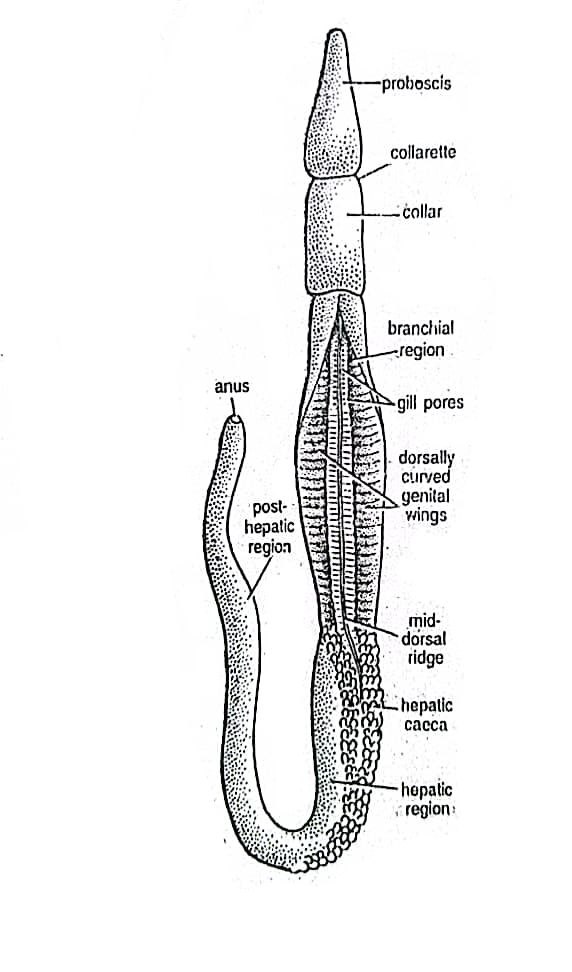
Image Source: Characters, Habitat and Labeled diagram of Balanoglossus
Balanoglossus is a marine invertebrate belonging to the phylum Hemichordata. Here are some of the key features of Balanoglossus:
Habitat: Balanoglossus is found in marine environments, particularly in shallow waters along the coastlines of the Atlantic, Pacific, and Indian Oceans. They are usually found buried in sand or mud at the bottom of the ocean.
Habit: Balanoglossus is a sedentary animal that spends most of its time buried in sand or mud at the bottom of the ocean. They use their proboscis, a muscular tube-like structure, to capture small prey and filter organic matter from the water.
Characters:
- Balanoglossus has a long, worm-like body that can reach up to 60 cm in length.
- The body is divided into three distinct parts: proboscis, collar, and trunk.
- The proboscis is a muscular tube-like structure that is used for feeding and respiration.
- The collar is a short, thick region that surrounds the base of the proboscis and contains several gill slits used for respiration.
- The trunk is the longest part of the body and contains the digestive system and reproductive organs.
- Balanoglossus has a dorsal nerve cord that runs the length of the body and is located above the notochord, a flexible rod-like structure that provides support to the body.
- Balanoglossus also has a unique water vascular system that is used for respiration, circulation, and excretion.
- Balanoglossus is a fascinating and important organism for understanding the evolution of invertebrate animals and their adaptations to life in marine environments.
There is reasonable evidence that this article is machine-generated. Posting such content is considered fraud. Fraud is discouraged by the community and may result in the account being Blacklisted.
Guide: Why and How People Abuse and Defraud
If you believe this comment is in error, please contact us in #appeals in Discord.